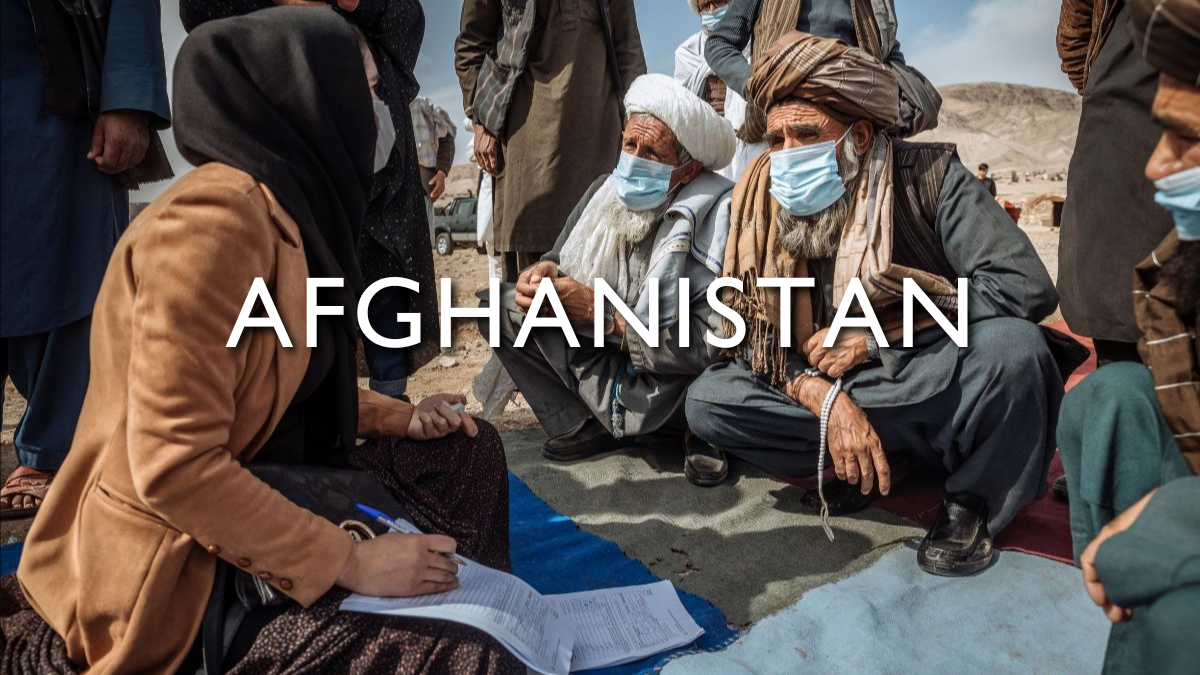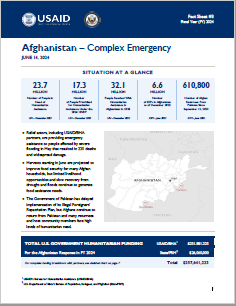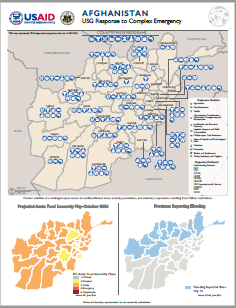
Following the Taliban's takeover in August 2021, economic and political instability have limited access to services across Afghanistan and hindered many households’ ability to meet their basic needs. The cumulative effects of conflict, displacement, and climatic shocks—including drought, earthquakes, and floods—have left approximately 23.7 million people, more than half of the country’s population, in need of humanitarian assistance in 2024, according to the 2024 Humanitarian Needs and Response Plan for Afghanistan. Four magnitude 6.3 earthquakes struck northwestern Afghanistan’s Herat Province in October 2023, resulting in widespread humanitarian need in the province. In addition, severe flooding in northeastern, northern, and western Afghanistan in May 2024 caused hundreds of deaths and significant damage to agricultural land and critical infrastructure. Following the Government of Pakistan’s mid-September 2023 announcement of its intent to repatriate undocumented Afghans, more than 610,000 Afghans have returned from Pakistan, with most returnees requiring food assistance, health services, and livelihood opportunities in their areas of return. Additionally, Taliban restrictions continue to hinder aid operations in the country and limit women and girls’ access to humanitarian assistance.
The U.S. Government is the largest donor of humanitarian assistance in Afghanistan, providing approximately $2.1 billion in humanitarian funding—including more than $1.5 billion from USAID— since August 2021. With USAID support, humanitarian partners are providing emergency food and nutrition assistance, health care services, and livelihood, multipurpose cash, protection, shelter, and water, sanitation, and hygiene support to populations in need countrywide. USAID partners prioritize maintaining safe spaces for women, children, and marginalized groups amid heightened vulnerabilities.


